Cranberry growing in South Africa
Cranberries are creeping or trailing plants of the genus Vaccinium (family Ericaceae), related to blueberries. Cranberry plants are small (40cm high), evergreen shrubs native to North America. Cranberries are easy-care plants that tolerate moist soils, but they do require a very low (acidic) soil of a pH level between 4.5- 5.5 to fruit and thrive.
Cranberry uses:
The cranberry’s sweet-tart red fruit is valued for its antioxidants and high content of vitamin C. Cranberries are commonly used as fresh fruit, used in fruit juices and cocktails, pies, jams, tarts, deserts and sauces. Cranberry juice is a well known treatment for urinary tract infections.
As part of a healthy diet, cranberries can be added to low-fat vinaigrettes, whole grain pancakes and yogurt.
Nutrition and health benefits:
- Cranberries score among the highest of all fruits in antioxidants. Diets including fruits and vegetables with high antioxidant values, like cranberries, may help support memory function and coordination. Antioxidant compounds such as oligomeric proanthocyanidins (OPC’s), anthocyanidin flavonoids, cyanidin, peonidin and quercetin in cranberries may offer protection against cardiovascular disease by counteracting against cholesterol plaque formation in the heart and blood vessels. Further, these compounds help the human body lower LDL cholesterol levels and increase HDL-good cholesterol levels in the blood.
- Delicious, tart cranberries hold significantly high amounts of phenolic flavonoid phytochemicals called pro-anthocyanidins (PAC’s). Scientific studies have shown that consumption of berries have potential health benefits against cancer, aging and neurological diseases, inflammation, diabetes, and bacterial infections.
- Research studies suggest that drinking cranberry juice can protect against gram-negative bacterial infections such as E.coli in the urinary system by inhibiting bacterial-attachment to the bladder and urethral mucosa.
- Consumption of cranberries turns urine acidic. Together with inhibition of bacterial adhesion actions (proteus bacterial-infections), cranberry juice can help prevent the formation of alkaline (calcium-ammonium- phosphate) stones inside the urinary tract.
- Further, the berries prevent plaque formation on the tooth enamel by interfering with the ability of another gram-negative bacterium, Streptococcus mutans to stick to tooth surface. It thus, helps prevent development of cavities.
- In addition, the berries are also good source of many vitamins like vitamin C, vitamin A, and folate and phenolics like ß-carotene, lutein, zea-xanthin, and minerals like potassium, and manganese.
- Cranberries are a cholesterol free, fat free and low sodium food, and help maintain a healthy heart.
- The berries are a natural source of lutein, which is great for eye health, and quercetin, which acts as an anti-inflammatory and may reduce the risk of atherosclerosis.
Source: www.nutrition-and-you.com
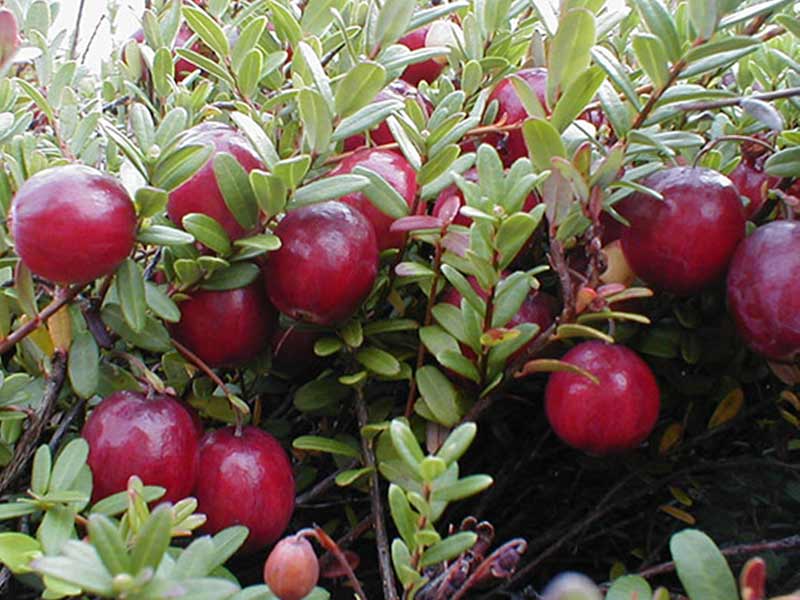
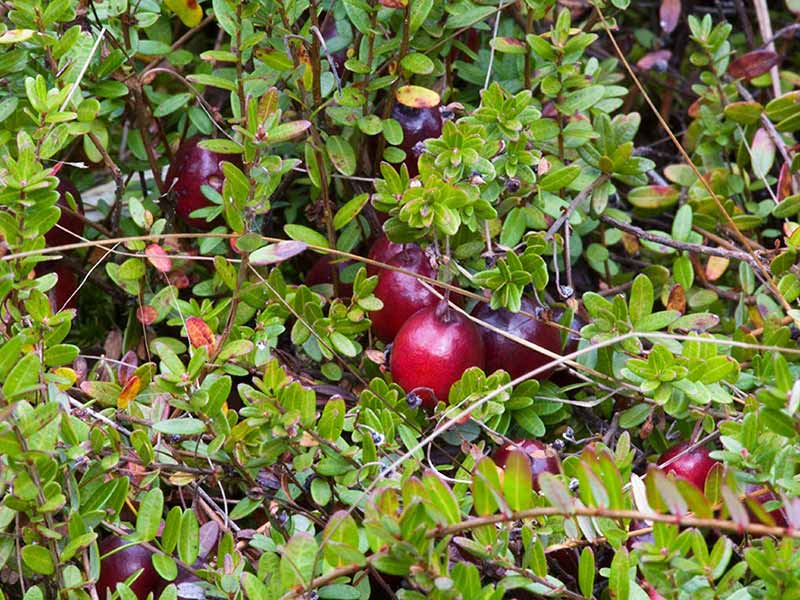
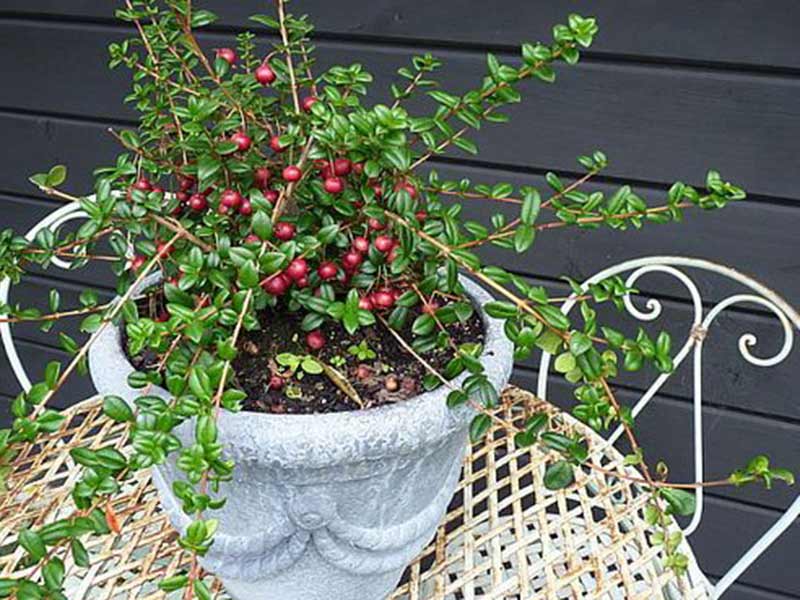
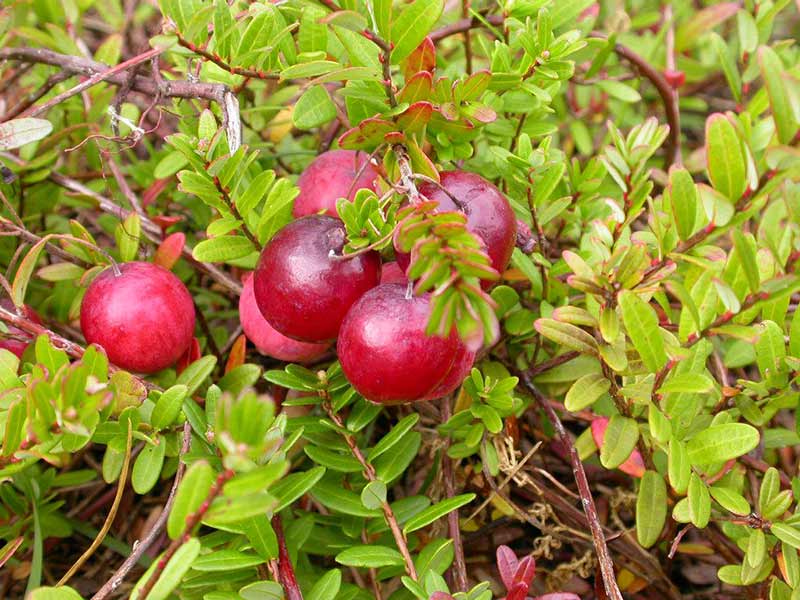
Site selection and preparation:
Contrary to popular understanding, cranberries are not actually grown in flooded bogs or marshes. Large cranberry fields are flooded to make harvesting easier as the berries float but this is not how the cranberry grows naturally.
It can take a few years before a newly planted bed will produce any fruit, but they will continue to provide cranberries almost indefinitely if they are cared for. There are some commercial fields that have been bearing fruit for more than 100 years.
Cranberry plants need soil with a low pH level (between 4.5 and 5.5) and a high level of organic matter. A mixture of sandy soil and untreated peat moss works well as a planting medium.
Cranberry plants grow best directly in the garden where they have plenty of space to spread their runners (vines). However, it is also possible to grow the cranberry plant in a large pot, if you prefer. A 5L or larger pot will suffice. We found that a large (20L) rectangular pot particularly works well, which can be placed on a window shelve to allow the runners to overhang.
These plants are extremely cold hardy and can be grown about anywhere in South Africa, but cooler areas works even better as the plant needs to enter it’s dormant state for optimum fruit production.
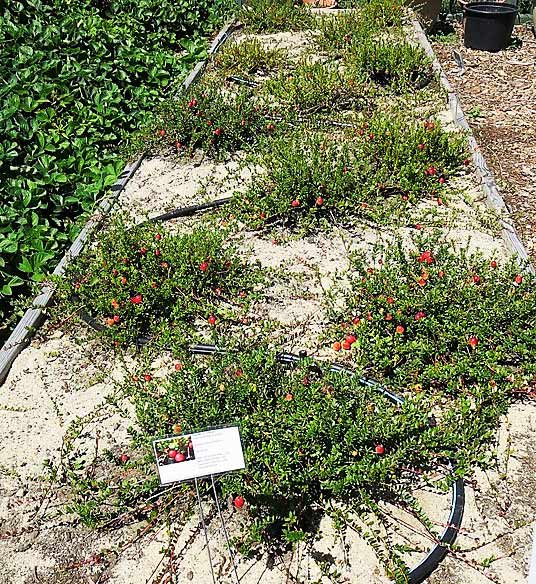
Spacing
A good spacing is 0.5 – 0.6m between plants with row spacing of around 0.5 m – 0.6m is recommended for these relatively small plants.
Interesting Fact:
The cranberry gets its name from Dutch and German settlers, who called it “crane berry.” When the vines bloom in the late spring and the flowers’ light pink petals twist back, they have a resemblance to the head and bill of a crane. Over time, the name was shortened to cranberry.
Irrigation
It is a common misconception that cranberry plants need to be saturated or submerged in water during growing. Although the soil should always be wet (or at least damp) to the touch, it shouldn’t be saturated with water. The plants also do not need as much water as they are relatively slow growing plants, but care must be taken for the roots not to completely dry out as the plant will certainly die.
Fertilising your Cranberry plants
Rock phosphate and Magnesium Sulphate (Epsom salts) can be used as fertilizers. Nitrogen in the form of Ammonium Sulphate can also be added especially during the first year or two to promote growth on the runners. After this period nitrogen can be withheld to promote the upright growth of the plant that will provide flowers and fruit. A thin layer of sand can also be applied every couple of years to help with healthy nutrition.
Pruning & Trellising
Prune the runners from the third year of growth. From the third year of growth onwards, you will need to prune the cranberry plants each spring to control the runners and encourage upright growth. Do not prune the existing uprights.
Harvesting and storage
Three year old plants should produce fruit by the following autumn.
Although commercial growers harvest cranberries by flooding the fields in order to make the cranberries float (and therefore easier to collect), this is not necessary for home growers. The cranberries can simply be picked off the plants by hand.
Once harvested, fresh cranberries will stay fresh for up to two months when stored in an airtight container in the refrigerator. Dried cranberries can be stored for up to one year.
Pests and diseases
Fortunately there are not many pests and diseases in South Africa that affect cranberries, although you might encounter bright red spots on the leaves which can be red leaf spot. The fungus will eventually cause the infected leaves to drop off. This can easily be treated with a copper-based fungicide spray.

